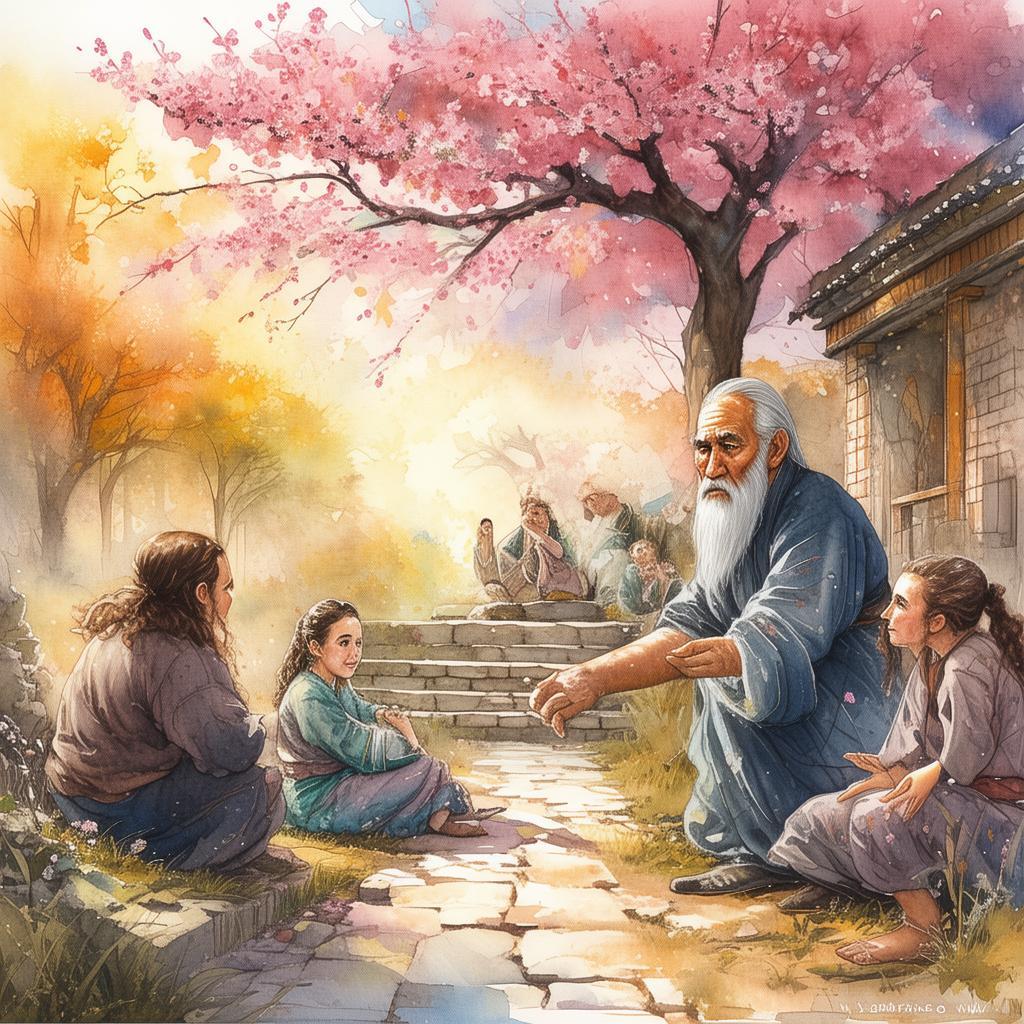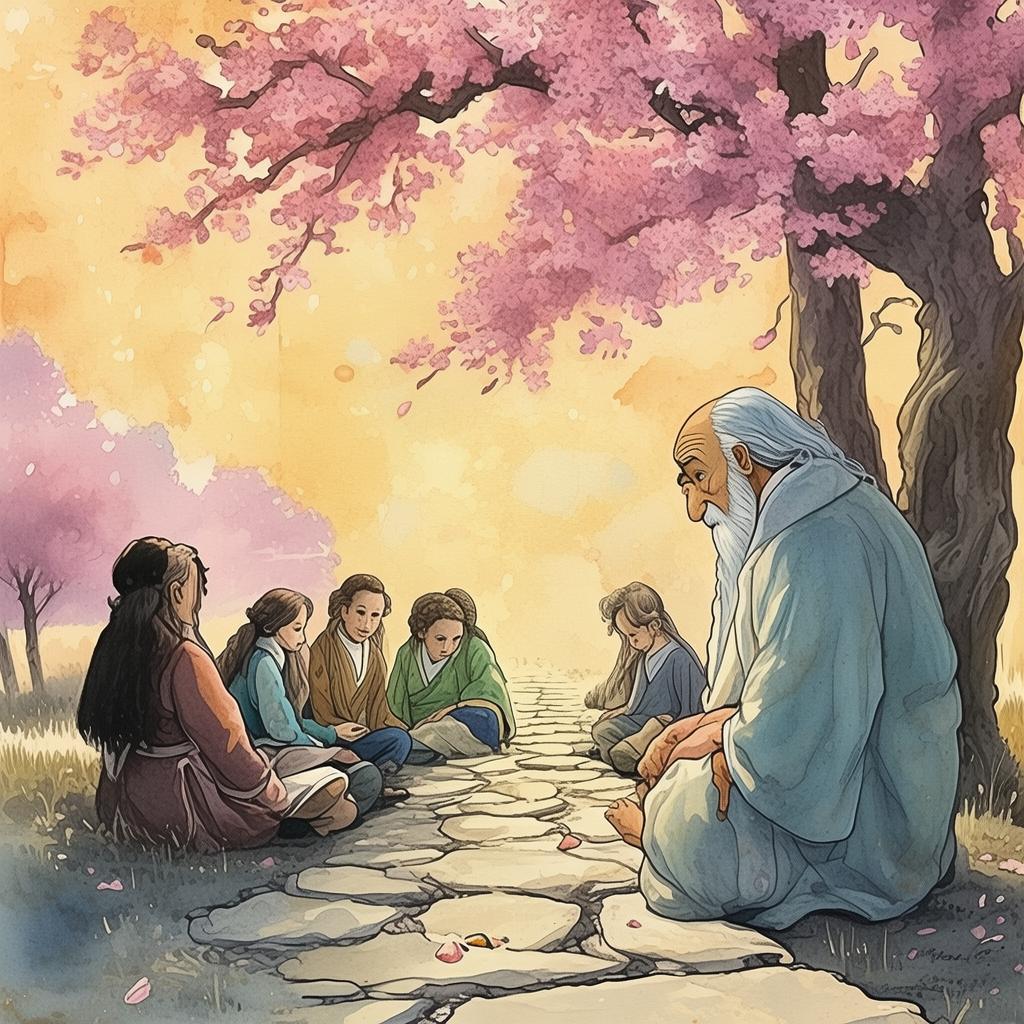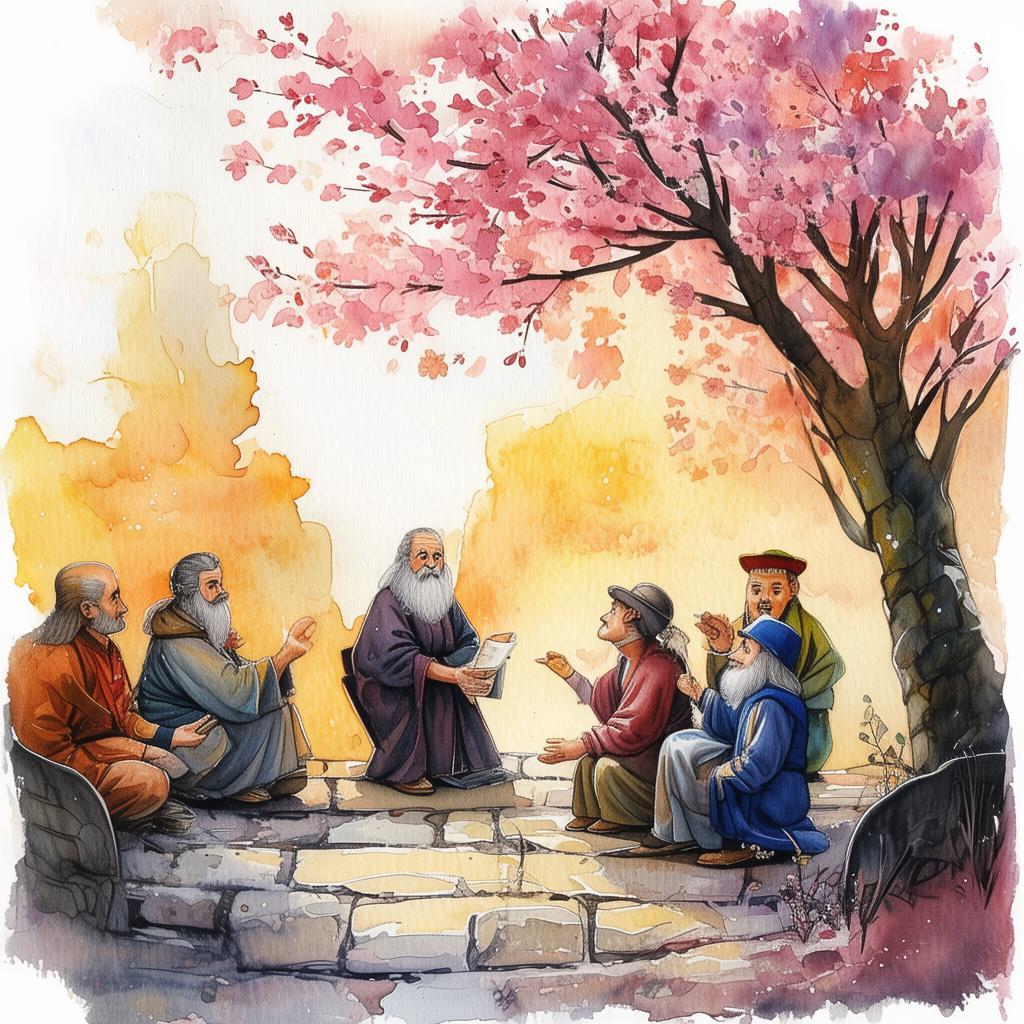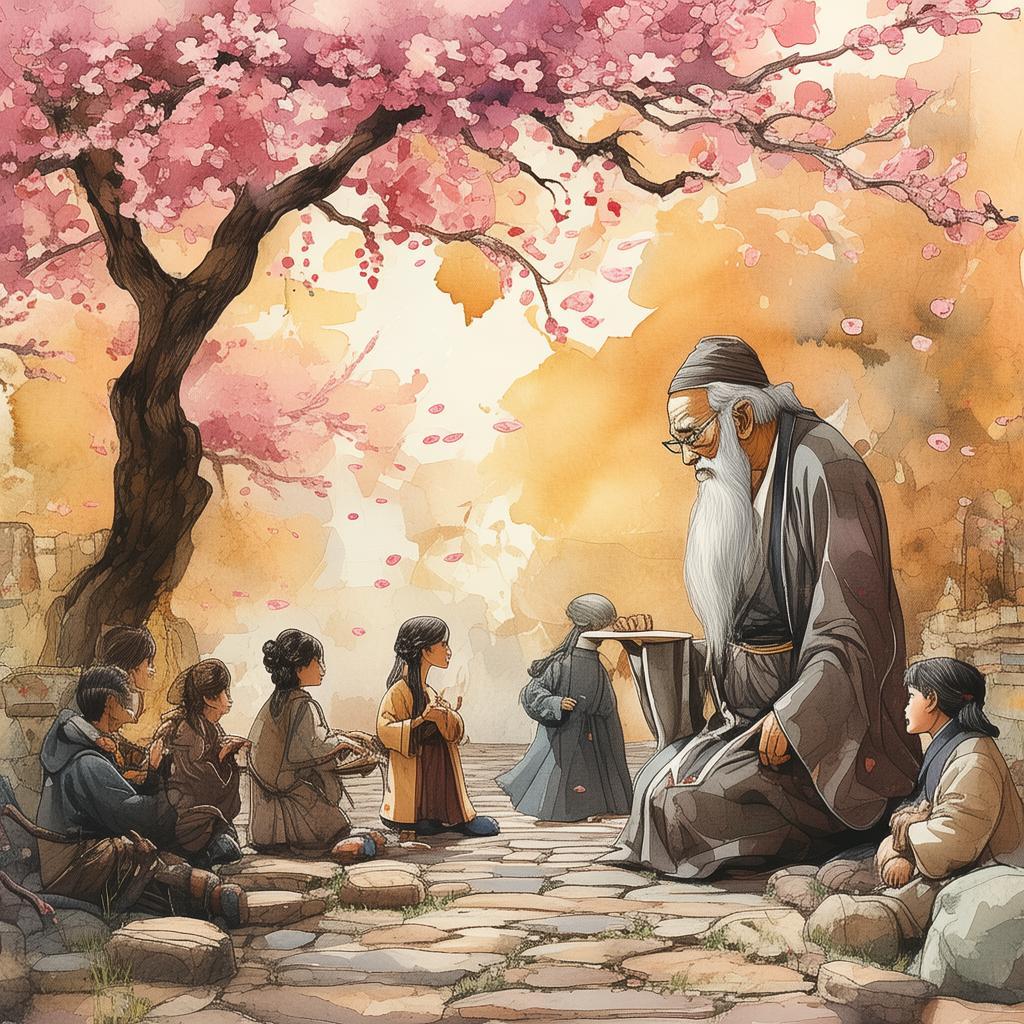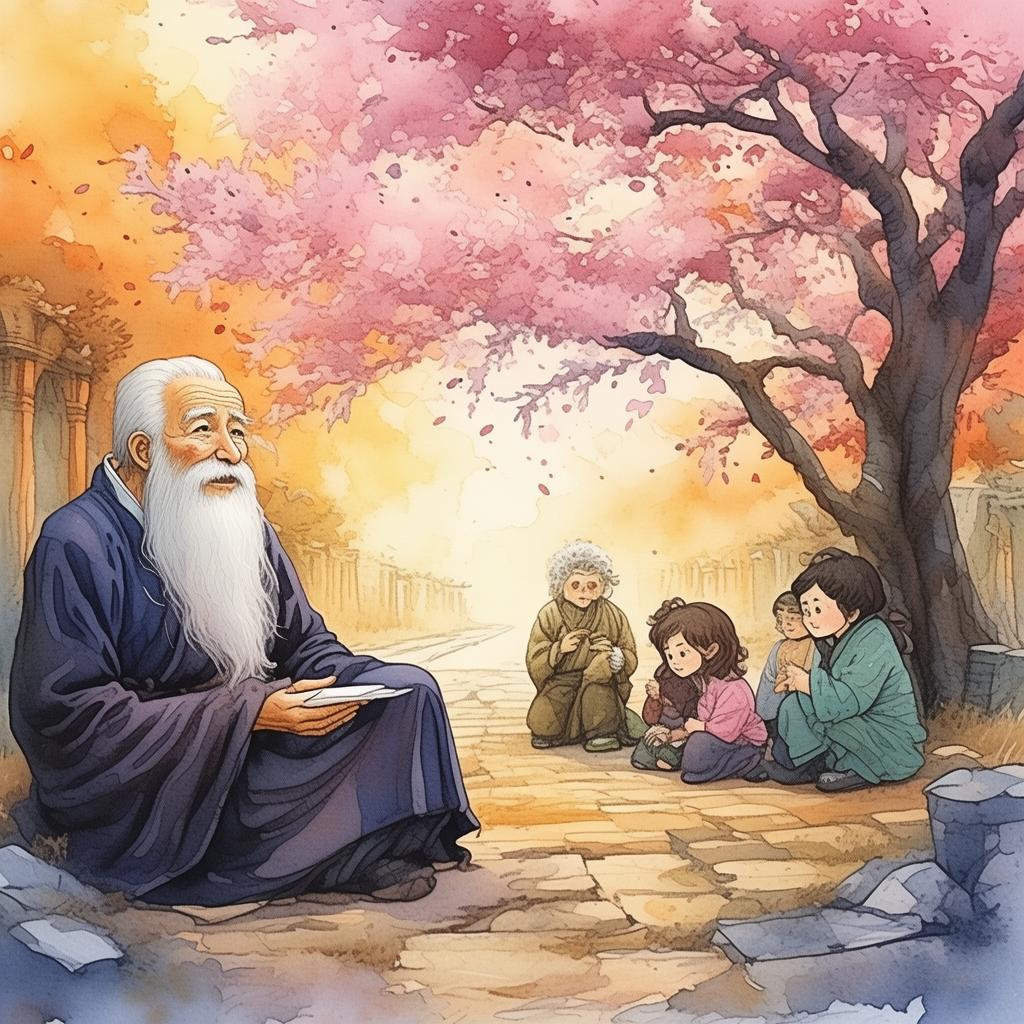Whispers of Despair: The Symphony of Sorrow's Silent Narratives
In the heart of a desolate city, where the echoes of sorrow seemed to weave through the very fabric of the air, there existed a symphony of despair. This was not a symphony performed in the traditional sense, with a conductor and a stage. No, this was a symphony that played itself, a silent symphony that resonated within the souls of those who had succumbed to the depths of desolation.
The title of this symphony was "The Symphony of Sorrow," a name that spoke of the aching melodies that could only be understood by those who had traversed the harshest of life's deserts. It was a musical journey of desolation, one that took its listeners on a haunting voyage through the emotional underbelly of humanity.
At the heart of this symphony was a young composer named Elara, whose life had been torn asunder by loss and tragedy. Her father, a renowned musician, had died under mysterious circumstances, leaving her with a legacy of music and a haunting sense of loss. Elara's life was a silent narrative, one that was as much about her search for her father's lost melodies as it was about her own struggle to find solace in the face of her own sorrow.

One day, while wandering the streets of the city, Elara stumbled upon an old, abandoned music shop. The shop was filled with dust and silence, but it was the collection of sheet music that caught her eye. Among the stacks of forgotten scores was a peculiar piece, its cover worn and its pages yellowed with age. It was a score titled "The Symphony of Sorrow," a name that seemed to echo her own pain.
Curiosity piqued, Elara purchased the score and began to study its intricate notes. She soon discovered that this was no ordinary symphony. Each movement was a narrative, a story of those who had been lost to desolation. The music itself was a reflection of their suffering, their joy, and their ultimate resignation to the silence that consumed them.
The first movement, "Whispers of Despair," was a hauntingly beautiful piece that told the story of a young woman who had lost everything she held dear. Her voice, captured in the music, was a whisper of hope that had been drowned out by the weight of her sorrow. The notes were soft and haunting, like the wind through the trees on a night of unrelenting rain.
The second movement, "The Desolate Garden," was a stark contrast, a depiction of a man who had found solace in a small garden he had created in the heart of the city. The music was filled with the joy of life, the chirping of birds, and the rustling of leaves, but it was a joy that was tinged with a sense of loss. The garden was a sanctuary, a place where he could escape the world's desolation, but it was also a reminder of the emptiness that lay just beyond its gates.
The third movement, "The Symphony of Silence," was perhaps the most poignant of all. It was a symphony that played without a single note, a reflection of the silence that had consumed the city. The music was a void, an absence that left listeners feeling as though they had been left behind, alone in the vast expanse of desolation.
Elara was captivated by the symphony. She saw it as a mirror to her own life, a testament to the pain and suffering that she had endured. She began to perform the symphony in various places around the city, using her music to connect with those who had been touched by desolation. The performances were moving, emotional affairs, where the music and the silence of the audience created a powerful bond.
One evening, as Elara played the final movement of the symphony, a young man approached her. His eyes were filled with sorrow, and his voice was a whisper when he spoke. "Thank you," he said. "Your music has given me hope. I've been lost for so long, but now I see that there is a way out."
Elara smiled, touched by the man's words. She realized that the symphony had not only brought her solace but had also become a beacon of hope for those who had been lost to the depths of desolation.
As the final notes of the symphony faded into the night, Elara knew that her journey was far from over. She had found a piece of her father's legacy, and with it, she had found a way to reach out to others. The Symphony of Sorrow had become more than just a musical composition; it had become a testament to the power of music to heal, to bring comfort, and to offer hope in the darkest of times.
In the end, Elara's own silent narrative was woven into the fabric of the symphony, her voice joining with the voices of those who had come before her. The Symphony of Sorrow became a journey of not just desolation, but of resilience, of hope, and of the enduring human spirit.
✨ Original Statement ✨
All articles published on this website (including but not limited to text, images, videos, and other content) are original or authorized for reposting and are protected by relevant laws. Without the explicit written permission of this website, no individual or organization may copy, modify, repost, or use the content for commercial purposes.
If you need to quote or cooperate, please contact this site for authorization. We reserve the right to pursue legal responsibility for any unauthorized use.
Hereby declared.
